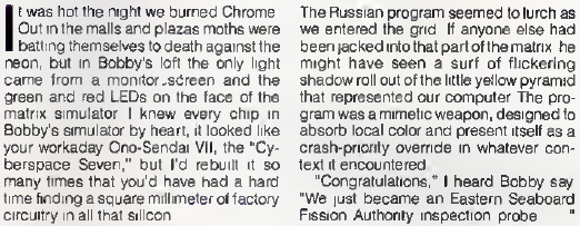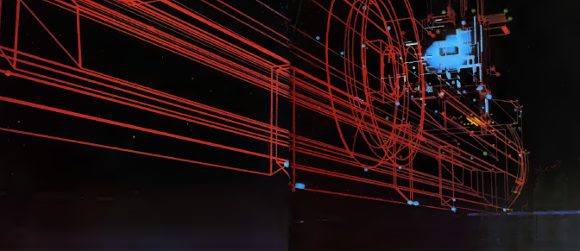Remember, remember the fifth of … June
![Thomas Harold Flowers (1905-1998)]()
June 1 should have been D-day, but General Eisenhower needed three subsequent days of fine weather to get enough men and materials across the channel in order to resist the inevitable counter-attack. In the event the weather was not good and the invasion had to be postponed until it improved. On 5 June, Eisenhower was in conference with his staff when a courier arrived from Bletchley Park and handed him a piece of paper to read. Hitler had sent Field Marshall Rommel battle orders by radio transmission, which Bletchley Park had decoded with the aid of the new Colossus. Hitler had told Rommel that the invasion of Normandy was imminent, but that this would not be the real invasion. It was a feint to draw troops away from the channel ports, against which the real invasion would be launched later. Rommel was not to move any troops. He was to await the real invasion, which could be expected five days after the Normandy landing. This was what Eisenhower read from the paper. He then knew that he could start the invasion of Normandy assured of five days without determined opposition—enough time to build up his forces even with indifferent weather. But he could not tell his assembled officers what he had read. He just handed the paper back to the courier and said, ‘We go tomorrow.’ And on the morrow, 6 June, they went.
When Hitler realised that Normandy was the real thing, he took command of the situation himself. He committed his forces in north-west Europe to one mighty offensive, a hammer blow intended to drive the invaders back into the sea. And his hammer blow could well have been successful had he not communicated details by radio, which Bletchley Park decoded. The result was a defeat of the German army so overwhelming that the Allies were able to sweep rapidly eastwards across France.
The war continued for another year, during which time a total of ten Colossus machines were installed in Bletchley Park. These supplied the armed services with information right up to the end of the war in Europe. Much later, when some of the activities of Bletchley Park had been made public, Eisenhower was asked to give his assessment of the effect that the operation there had had on the war. He said that, without the information Bletchley had supplied, the war would have gone on for at least two years longer than it did, during which time the occupied countries would have been devastated and hundreds of thousands of lives lost as the German army was driven back. (Flowers 2006 [1998]a: 80-81)
This is the story of the eve of ↑D-Day as related by ↑Thomas Harold Flowers (1905-1998). He was crucial in constructing ↑Colossus—for the whole story see Randell 1980 and the excellent book edited by Jack Copeland (2006) including texts by Flowers himself (2006 [1998]a, b).
With all the commemoration of D-Day, 70 years ago tomorrow, I dare to throw in this bit on 05 June 1944, finely illustrating the impact of encryption, the breaking of encryption, and computing power on world history.
![Edward Joseph 'Ed' Snowden]()
By sheer coincidence one year ago from today, on 05 June 2013, journalists Glenn Greenwald, Laura Poitras, and Ewen MacAskill were with ↑Edward Snowden in Hong Kong. The editors and lawyers of The Guardian at this time still were working out legalities concerning the publication of articles drawing on the NSA-files provided by Snowden. But finally Greenwald got from The Guardian a ‘We go tomorrow’. And on the morrow, 6 June, ↑they went … beginning a ↑series of revelations finely illustrating the impact of encryption, the breaking of encryption, and computing power on world history.
For grasping the whole affair—an imperative!—I wholeheartedly recommend Greenwald’s book ‘No Place to Hide’ (2014) [for the occasional anthropologist dropping by here: there's Foucault in it, and for normal people: especially the first two chapters could have originated from John le Carré, Len Deighton, or Eric Ambler]. As I understand the matter you can ↓download ‘No Place to Hide’ legally here from ↑cryptome.org. Then The Guardian‘s excellent webpage ↑The NSA Files. And of course the Wikipedia articles ↑Edward Snowden, ↑Global surveillance disclosures (2013–present), and related articles linked therein.
COPELAND, B. JACK. 2006. Colossus: The secrets of Bletchley Park’s codebraking computers. Oxford: Oxford University Press.
FLOWERS, THOMAS H[AROLD]. 2006 [1998]a. “D-Day at Bletchley Park,” in Colossus: The secrets of Bletchley Park’s codebraking computers edited by B. Jack Copeland, pp. 78-83. Oxford: Oxford University Press.
FLOWERS, THOMAS H[AROLD]. 2006 [1998]b. “Colossus,” in Colossus: The secrets of Bletchley Park’s codebraking computers edited by B. Jack Copeland, pp. 91-100. Oxford: Oxford University Press.
RANDELL, BRIAN. 1980. “The COLOSSUS,” in A history of computing in the twentieth century: A collection of essays edited by Nicholas Metropolis, Jack Howlett, and Gian-Carlo Rota, pp. 47-92. New York, London: Academic Press.
![Share]()



![Panel taken from page 15 of Hergé 1968 [1966-1968].](http://xirdalium.net/wp-content/uploads/flight714a.png)
![Panel taken from page 16 of Hergé 1968 [1966-1968].](http://xirdalium.net/wp-content/uploads/flight714b.png)
![Panel taken from page 20 of Hergé 1968 [1966-1968].](http://xirdalium.net/wp-content/uploads/flight714c.png)










